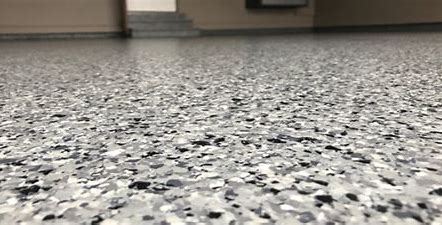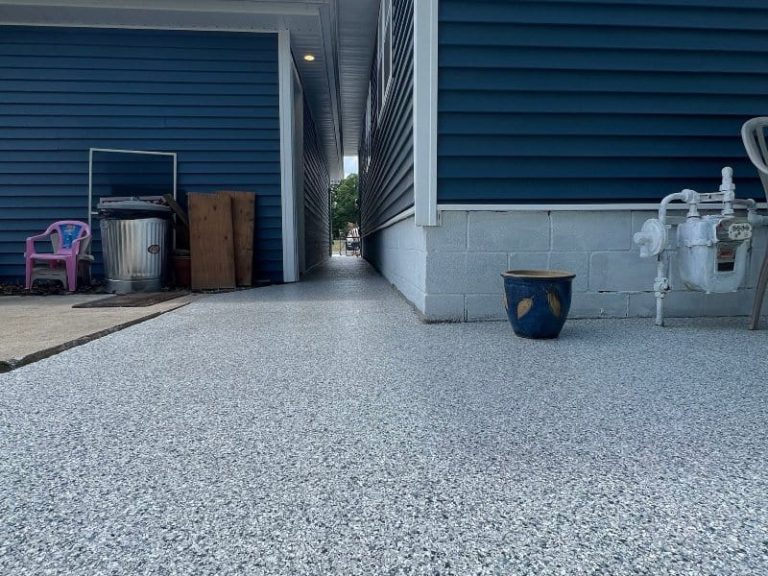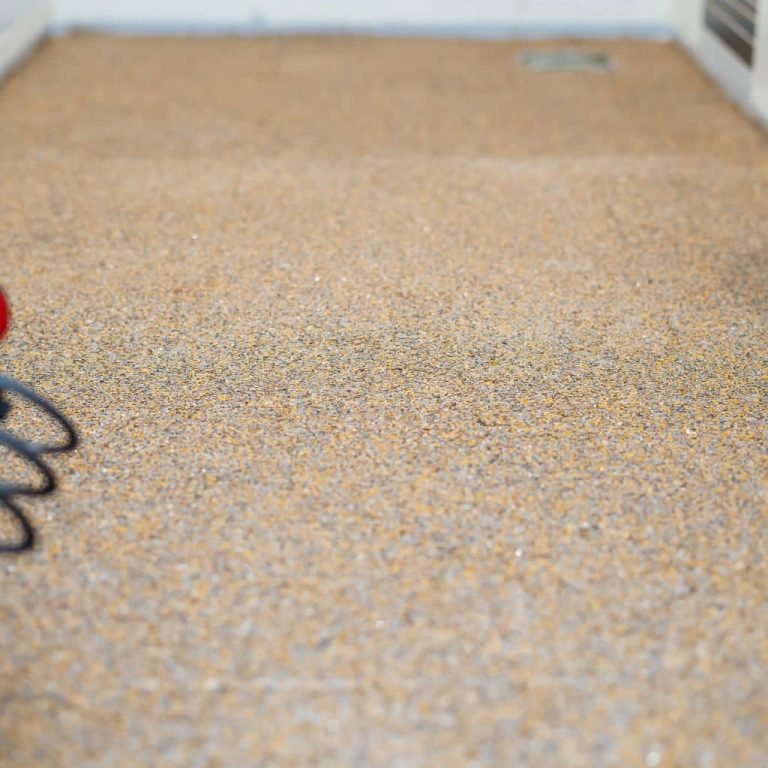When renovating or updating your home, you want to make decisions that offer both immediate aesthetics and strong return on investment (ROI). From kitchen countertops to bathroom fixtures and flooring, each choice can influence your property’s resale value. These days, many homeowners are shifting their focus beyond just interior décor to the spaces they may have once overlooked—garages, basements, patios, and more. The flooring in these areas is no exception.
During a recent interview, concrete-coating expert Crayton Caudill at Level 10 Coatings (serving Indiana and the Chicagoland region) tackled the question, “What floor gives more value to a house?” His short answer was telling: a polyurea polyaspartic concrete coating can deliver significantly more long-term value than a standard epoxy floor. While you may not notice the difference immediately, the benefits become evident over time, especially if you plan to sell or simply want a space that stands up to daily use for years to come.
In this article, we’ll explore how flooring choice can affect your home’s value. We’ll examine why polyurea polyaspartic coatings outperform epoxy when you look at factors like longevity, appearance, and homeowner satisfaction. Finally, we’ll discuss how to decide whether an upgrade is worthwhile, and how to maximize your investment if you do choose to install a professional-grade concrete coating.
Why Flooring Matters for Home Value
Homeowners and prospective buyers often focus on kitchens, bathrooms, and curb appeal as the biggest return-on-investment areas. While these are indeed important, more people are starting to scrutinize other aspects of a house, too. Spaces like garages, basements, enclosed patios, or walkways can make a home stand out—and in a competitive market, any edge can attract higher offers or faster sales.
What’s the primary reason for this shift? Modern homebuyers want multifunctional spaces. A garage is no longer just storage for a vehicle; it may double as a workshop or a home gym. A basement might not just be for boxes or seasonal items; it can be a finished living area, office, or entertainment room. With these expanded functions, the quality and durability of the flooring in these areas becomes a critical selling point.
Buyer Impressions
First impressions matter. If a prospective buyer sees a well-finished garage floor, it signals that the house has been well-maintained. It hints at the possibility of additional care throughout the home, which often reassures a buyer that they won’t inherit a long list of fix-it tasks. Meanwhile, a cracked, peeling, or stained concrete surface might suggest unresolved maintenance issues lurking below the surface.
Real Estate Perspective
From a real estate standpoint, it’s hard to put an exact percentage on how much value a particular floor coating adds to a listing price. However, many agents agree that if multiple houses in the same price range are for sale, the property with the cleaner, more modern garage or basement often has the edge. Buyers frequently use these details to differentiate similar listings, and a new, high-quality coating helps your home stand out and command a stronger price.
Epoxy Floors: The Traditional Choice
Epoxy flooring has long been the go-to solution for homeowners who want a step up from bare concrete. An epoxy floor involves mixing a resin and a hardener to create a strong, sealed surface over the concrete. This approach offers some advantages:
- Cost-Effectiveness (Short-Term): Epoxy can be relatively inexpensive, particularly DIY kits found at home-improvement stores.
- Decent Durability (Mid-Range): Under fair conditions, an epoxy floor can last for several years, often anywhere from 5 to 10, depending on use and climate.
- Variety of Styles: Epoxy coatings come in many colors and finishes. Some homeowners also add decorative flakes for texture and aesthetics.
However, despite its popularity, epoxy has its share of downsides:
- Prone to Yellowing: Epoxy tends to fade or develop a yellowish tint from UV exposure, especially in spaces with windows or if the garage door remains open.
- Limited Lifespan: While epoxy is reasonably tough, it doesn’t match the decades-long durability possible with higher-end coatings.
- Long Curing Time: Epoxy often requires multiple days to cure fully before you can park your car or move heavy items back in.
Polyurea Polyaspartic: The Upgraded Option
In contrast to epoxy, polyurea polyaspartic floor coatings represent a more advanced technology. They’re often marketed as the next generation of concrete coatings, and for good reason:
- Exceptionally Long Lifespan: A well-installed polyurea polyaspartic coating can last 20 to 25 years. That’s double or triple the lifespan of many epoxy floors.
- Rapid Curing: Most polyurea-based systems cure much faster—sometimes in a matter of hours. This means less downtime and quicker return to normal household activity.
- Flexible Yet Strong: The coating can flex slightly with the concrete as temperatures shift, reducing the risk of cracking or delamination.
- UV Resistance: Polyurea polyaspartic coatings generally resist fading and yellowing, making them ideal for garages with lots of sunlight or outdoor spaces like patios and pool decks.
Crayton Caudill’s stance is clear: a polyurea polyaspartic concrete coating not only solves many of the issues that epoxy might face over time, but it also “gives much more value” to the home. In the immediate short term, you might see two freshly completed floors—one epoxy, one polyurea polyaspartic—and think they look similar. But over the course of five, ten, or twenty years, the difference in wear, color retention, and resilience becomes striking.
Understanding “Value” in Concrete Floor Coatings
The word “value” can mean different things. Sometimes, it’s purely about financial ROI—the difference in how much more a prospective buyer might be willing to pay. Other times, it’s about long-term savings, whether from reduced maintenance or fewer replacements. And sometimes, “value” is about livability: how pleasant, safe, and functional a space feels daily. Here’s how a polyurea polyaspartic coating excels in each of these categories:
Financial ROI
While a polyurea polyaspartic floor often costs more to install than an epoxy solution—typically ranging from 7 to 12 dollars per square foot (depending on factors like location, square footage, and condition of the concrete)—you might only pay for it once over the lifetime of owning your home. An epoxy floor may cost less initially, but you could end up re-coating it in seven to ten years, effectively doubling the total expense.
If you’re planning to sell your home, a new, well-maintained, high-quality floor can appeal to buyers looking for a move-in-ready property. Instead of seeing a future maintenance expense, they perceive an asset that’s built to last. This kind of intangible benefit can tip the scales in your favor during negotiations or attract multiple offers.
Long-Term Savings
Epoxy floors can be prone to hot-tire pickup (where the floor peels as hot tires cool down after a drive), fading from sunlight, or damage from caustic chemicals if the coating is low-quality or improperly installed. When issues arise, you may spend additional funds on repairs, cleaning products, or even total replacement. A polyurea polyaspartic system, on the other hand, is designed to be more resistant to these problems, meaning you spend less on upkeep overall.
Daily Livability and Comfort
Although the garage is often treated as a separate zone from the main living areas, more homeowners are capitalizing on this square footage in creative ways. It could be a workshop, a hobby studio, or even an extension of your entertaining space. Having a floor that’s easy to clean, resistant to stains, and comfortable to walk on in various climates raises daily quality of life. The same holds true for basements, patios, or any spot you coat with polyurea polyaspartic. It transforms concrete from something purely utilitarian to a polished, versatile surface.
Short-Term vs. Long-Term: Epoxy vs. Polyurea Polyaspartic
One of the key points Crayton Caudill made was that if you look at two newly finished floors side by side, you might not immediately notice a difference in “value.” Over the next few days or weeks, both floors will appear new, clean, and functional. But the gap in quality emerges as the months and years roll on:
- Color Stability: The polyurea polyaspartic coating remains fresh-looking. Epoxy might start to show slight discoloration, especially where sunlight touches the floor frequently.
- Surface Integrity: Micro-cracks or peeling that can appear in some epoxies remain virtually absent in a properly installed polyurea polyaspartic floor.
- Maintenance Effort: Both floors may be easy to clean initially, but the epoxy floor can develop stubborn stains or tire marks that prove tougher to remove over time. Meanwhile, polyurea polyaspartic tends to release dirt and grease more easily.
If you intend to stay in your home for the foreseeable future, investing in a higher-grade solution pays off in comfort and reliability. If you’re looking at a potential sale down the line, prospective buyers might not consciously know the difference between epoxy and polyurea polyaspartic—yet the overall look and sense of durability can impress them in subtle ways, potentially boosting your final sale price.
When Epoxy Might Be “Enough”
While polyurea polyaspartic outperforms epoxy in most categories, epoxy does still have its place. If you’re on a tight budget or simply don’t plan on staying in the home for more than a few years, you might opt for epoxy as a more cost-friendly solution. Epoxy also offers a variety of colors and finishes that can provide a decent visual upgrade over bare concrete—especially when installed by skilled professionals who do thorough surface prep.
However, if you’re aiming to maximize the long-term worth of your property or you’ve repeatedly run into issues with subpar flooring, the additional upfront cost of a premium coating often proves worthwhile.
What to Look for in a Professional Installer
No matter which coating you choose, the installer’s expertise is crucial to the floor’s ultimate performance. Look for a company or professional who:
- Uses Quality Materials: Cheaper materials can mean lower resilience, regardless of whether they’re epoxy or polyurea.
- Focuses on Surface Preparation: The best installers grind or shot-blast the concrete to achieve a strong mechanical bond. Proper prep is arguably the most critical step.
- Offers Warranties: An installer who stands behind their work with a multi-year warranty signals confidence in the product and process.
- Has Proven Experience: Look at reviews, images of past projects, or testimonials from other homeowners. Seek out those who consistently deliver durable, visually appealing floors.
- Explains the Process: Communication is key. A reputable professional should walk you through the steps, from inspecting the slab to final cleanup.
Additional Factors That Enhance Your Coating’s Value
- Decorative Flakes or Custom Finishes: Beyond plain gray, decorative flakes or metallic epoxies can level up the look significantly. This design customization can elevate the overall impression of the home.
- Slip Resistance: Some systems include slip-resistant additives, making the floor safer when wet. This is especially beneficial for pool decks, outdoor walkways, or households with kids and pets.
- Chemical Resistance: If your household uses harsh chemicals or if you frequently tinker with vehicles in the garage, a coating with high chemical resistance will protect your concrete and keep it looking pristine.
- UV-Blocking Topcoats: Even if you choose epoxy, adding a high-quality UV-blocking topcoat can help slow down the fading process. However, polyurea polyaspartic typically has this UV resistance built in.
Is a Polyurea Polyaspartic Floor Right for You?
Deciding whether to invest in a higher-grade floor coating often comes down to three questions:
- What’s My Time Horizon? If you plan to move soon, a cheaper solution might suffice. But if you’ll be around a while (or want a strong selling point when you list), the longevity of polyurea polyaspartic can be a major asset.
- Do I Want the Best Possible Quality? Some homeowners prefer top-of-the-line products to minimize hassle later. If that sounds like you, consider the advanced technology of polyurea polyaspartic.
- What’s My Budget? Polyurea polyaspartic costs more upfront. However, if you avoid redoing the floor for decades, you might save money in the long run.
Conclusion
A top-notch garage, basement, or outdoor floor isn’t just about looks—it can significantly influence your home’s value, livability, and ongoing maintenance costs. According to expert Crayton Caudill of Level 10 Coatings, polyurea polyaspartic coatings offer homeowners a major advantage over traditional epoxy when it comes to long-term value and overall performance. While it may require a higher initial investment, the benefits in durability, UV resistance, ease of maintenance, and resale potential are considerable.
Whether you’re eyeing a future sale or simply want a floor that won’t peel or discolor under regular use, polyurea polyaspartic deserves serious consideration. It excels where epoxy can fall short—particularly over many years—and ensures that any prospective buyer will see a home that’s been meticulously cared for. Ultimately, the flooring you choose can make a real difference in how much enjoyment you get out of your space and how well your property holds its value in a competitive market.


